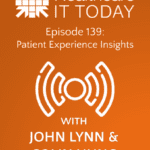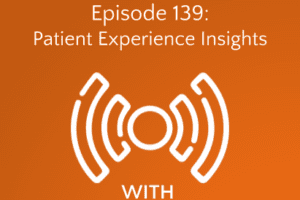The following is a guest article by Doug Bierbower, Vice President of Solutions Engineering at SOLiD Americas
When delivering first-rate care, every aspect of the patient experience is critical. And in today’s always-connected 5G world, much of that experience depends on pervasive, secure mobile device connectivity. Physicians, nurses, staff, patients, and visitors need seamless indoor wireless coverage.
As a result, the health of a hospital’s in-building wireless network is more important than ever — from the patient intake process to the delivery of accurate medical device results to secure transmission of electronic health records. So, what can healthcare IT professionals do to ensure a better-connected experience for patients, staff, and visitors?
Mobile Connectivity Matters
Spotty or nonexistent In-building mobile connectivity impacts the patient experience significantly. Consider if a patient is trying to use their smartphone to review laboratory test results or a family member wants to video chat with other family members about a loved one’s care. Moreover, many healthcare facilities now allow a bring-your-own-device (BYOD) policy, which means that physicians and staff must have secure and reliable 24×7 connectivity to the major mobile network providers to access electronic healthcare records and application data or to consult with a distant specialist about a patient’s treatment.
Now, consider cutting-edge technology use cases that are still on the horizon. Future healthcare technology might include remote surgery enabled by augmented reality (AR) and virtual reality (VR) or the use of complex artificial intelligence (AI) and machine learning (ML) algorithms to conduct patient diagnoses. Tomorrow’s healthcare providers will use the Internet of Things (IoT) to monitor and maintain diagnostic equipment and other medical devices. These applications require mission-critical, secure, reliable, and ubiquitous connectivity to ensure optimum patient outcomes.
Technology Evolution Concerns
The inconvenient truth is that hospitals and medical campuses are not built with mobile signal transmissions in mind. Neighboring structures, modern LEED building materials, energy-efficient windows, and unique interior layouts present physical challenges to device connectivity indoors. Compounding this situation is the nearly pervasive adoption of 5G technology, which is rapidly changing how we stay connected. In fact, the number of 5G subscribers is predicted to reach 8 billion worldwide by 2028, up from approximately 1.4 billion already.
As demand for 5G continues to grow, the need for greater network coverage and capacity requires new 5G radio frequency (RF) spectrum allocations. In response, the U.S. Federal Communications Commission (FCC) opened up new mid-band frequencies, such as the C-Band and Citizens Broadband Radio Service (CBRS), to supplement the higher mmWave frequencies already allocated for 5G.
Unfortunately, although these new mid-band frequencies offer an ideal mix of speed, capacity, and coverage for outdoor wide-area 5G networks, their signal characteristics are not necessarily ideal for in-building connectivity. In fact, the mid-band and higher spectrum 5G frequencies in use today are even less likely to penetrate building materials than the lower frequencies traditionally used for mobile communications. This means that signals from outdoor networks are blocked not only by neighboring buildings but also by interior walls, furniture, and other obstacles, leading to dropped calls and poor quality of service (QoS) inside buildings.
Plan for Today and Tomorrow
To ensure that patients, staff, and visitors can access 5G communications inside buildings and across campuses, existing in-building distributed antenna system (DAS) platforms must be updated or replaced to work with the new mid-band frequencies. If the DAS platform cannot be upgraded, this might require an expensive and time-consuming “rip and replace” project. On the other hand, those healthcare facilities with a modular, multi-band DAS may be able to add new frequency bands to their existing equipment. However, there will be some necessary modifications due to the particular characteristics of the new frequency bands.
Mid-band spectrum is well-suited for 5G wide-area network deployments because it provides access to larger channels compared to older technologies, which enables significantly greater capacity. Yet, wider channels consume more radio output power, resulting in a smaller coverage area per antenna due to weaker signals. This is compounded by the fact that the mid-band spectrum also offers a shorter signal propagation range than the previous mobile communications spectrum.
Moreover, interior building materials such as walls, cubicles, and furniture will further impede penetration of 5G frequencies throughout the building. For example, indoor C-Band coverage per antenna is roughly 15 percent of the coverage provided by legacy mobile frequencies at the same power level. In fact, in a typical building with furniture and sheetrock walls, an antenna providing a little more than 1,000 square feet of coverage with 4G in the legacy Advanced Wireless Service (AWS) band would only cover around 150 square feet with the 5G C-Band.
As a result of all these obstacles, achieving the same in-building coverage footprint will require changes in how the upgraded DAS equipment is configured. This might mean the addition of amplifiers that provide 4 to 10 times more output power per antenna to prevent “dead zones” where coverage drops off. Alternatively, if the legacy system already uses high-output power amplifiers, adding a fiber-to-the-edge overlay system to support the new 5G frequencies is another option. This allows high-speed data and voice transmissions to be carried all the way to the edge of the network, closer to the users, for enhanced connectivity and improved QoS.
With a common fiber infrastructure throughout buildings and across campuses, healthcare IT professionals can take advantage of the latest optical networking capabilities for wired local area networks (LANs). This fiber infrastructure provides optimized performance, minimum latency, and inherent data security to support IoT connectivity, AR/VR technologies, and new medical devices that require higher bandwidth. In addition, a fiber LAN enables more efficient building management systems, such as intelligent heating and lighting, or secure personnel access systems.
Improve Overall Experiences
Today’s patient experience is dynamically changing. Smartphones, tablets, laptops, and mission-critical medical devices need to work all the time, everywhere, throughout healthcare facilities. As the Tier 1 mobile service providers continue building their networks using mid-band 5G frequencies, in-building communications systems must evolve to keep pace. This evolution enables healthcare facilities to deliver a more pervasive, secure connectivity experience that facilitates BYOD mobility and provides sufficient bandwidth for the best possible patient experience and overall well-being.
 About Doug Bierbower
About Doug Bierbower
Doug Bierbower is Vice President of Solutions Engineering for SOLiD Americas. He has more than 25 years of experience in telecommunications, including in-building wireless system design, optimization, technical support, and product management. Doug holds a bachelor’s degree from the University of Texas at San Antonio.













